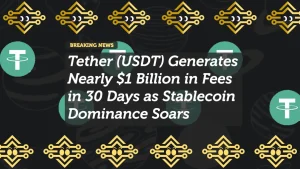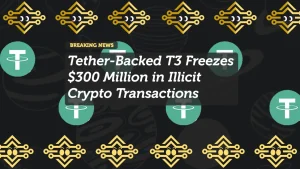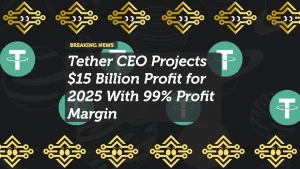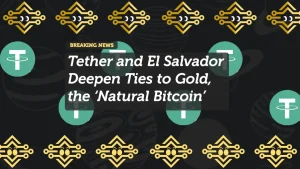
Tether Partners with KraneShares and Bitfinex Securities to Expand Tokenized Capital Markets
November 6, 2025 — Stablecoin issuer Tether (USDT) has entered into a strategic agreement with KraneShares and Bitfinex Securities to accelerate the development of tokenized capital markets, further merging blockchain-based finance with traditional investment infrastructure.
The collaboration aims to leverage Tether’s digital asset expertise, KraneShares’ ETF and asset management experience, and Bitfinex Securities’ regulated token issuance platform to bring institutional-grade investment products onto the blockchain.
Bridging Traditional Finance and Web3
The new alliance seeks to position blockchain technology as the next frontier for capital markets — making real-world assets (RWAs) and tokenized securities more accessible to global investors.
KraneShares, known for its suite of China-focused and thematic ETFs, brings deep experience in fund structuring and institutional compliance. Bitfinex Securities, regulated in El Salvador and Kazakhstan, offers the token issuance and secondary trading infrastructure necessary for regulated digital securities.
According to the announcement, the partnership will explore tokenized ETFs, bonds, and other yield-bearing products, potentially allowing investors to gain exposure to traditional assets through blockchain rails — backed by Tether’s USDT stablecoin liquidity.
“Tokenization is not the future — it’s the now,” said Paolo Ardoino, CEO of Tether. “This partnership demonstrates how digital assets can strengthen, not replace, the traditional financial system.”
A Big Step for Institutional Tokenization
Tokenization — the process of converting traditional financial assets into blockchain-based tokens — has emerged as a core trend in 2025, with over $12 billion in tokenized treasuries and bonds currently active on public networks.
Tether’s move into tokenized capital markets follows its growing focus on USDT adoption beyond trading, especially in real-world applications like cross-border settlements, remittances, and yield-bearing tokenized products.
KraneShares’ CEO Jonathan Krane noted that the collaboration “brings together compliance, capital, and crypto liquidity in one powerful ecosystem.”
Bitfinex Securities will facilitate the listing and trading of tokenized instruments born out of this partnership — including those compliant with MiCA and other global regulations.
Tether’s Broader Strategy in 2025
Tether has significantly expanded its portfolio in 2025, moving beyond stablecoins into AI infrastructure, energy investments, and blockchain financial products.
Earlier this year, the company announced:
- A $1 billion energy infrastructure initiative in Latin America and Asia;
- The launch of Tether Data, focusing on blockchain analytics and AI applications;
- And now, a capital markets initiative aimed squarely at institutional adoption.
With over $118 billion USDT in circulation, Tether continues to dominate the stablecoin market — and its push into tokenized capital markets signals a bid to become a key liquidity provider for the tokenized asset economy.
Why It Matters
This partnership signals a new phase in the integration of traditional finance and blockchain:
- KraneShares brings asset management and ETF compliance expertise;
- Bitfinex Securities provides a regulated platform for token issuance and secondary trading;
- Tether anchors it all with liquidity, stablecoin rails, and blockchain know-how.
The move may help attract institutional capital that has been cautious about DeFi — offering a familiar regulatory and structural framework, but with the benefits of blockchain transparency and settlement efficiency.
Looking Ahead
As the tokenized asset sector grows toward a projected $16 trillion market by 2030, partnerships like this one could set the template for how traditional and decentralized markets converge.
Tether’s strategic alignment with KraneShares and Bitfinex Securities positions the firm at the center of this transition — bridging the gap between global capital markets and the on-chain economy.














